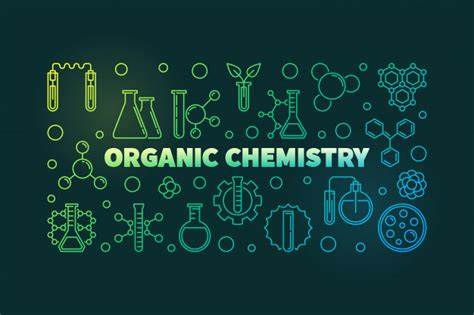Time: Popularity:0times
Organic chemicals form the molecular foundation of life and modern industry, but their structures hide fascinating quirks few people know. Here are some remarkable facts about how carbon-based compounds assemble themselves in unexpected ways.

Many organic compounds share the same atoms but arrange them differently, creating molecules with dramatically different properties. For example:
| Compound | Molecular Formula | Isomer Type | Key Difference |
|---|---|---|---|
| Glucose | C₆H₁₂O₆ | Stereoisomer | Right-handed version is sweet; left-handed isn't |
| Carvone | C₁₀H₁₄O | Enantiomer | One smells like spearmint; the other like caraway |
| Octane | C₈H₁₈ | Chain isomer | Straight-chain burns smoothly; branched prevents engine knock |
This structural nuance explains why drug manufacturers must carefully control isomer production - the "wrong" version of thalidomide caused birth defects while the correct one treated morning sickness (1).
While we often draw benzene as a flat hexagon, many cyclic compounds actually twist into unexpected shapes:
| Ring Size | Preferred Shape | Why It Matters |
|---|---|---|
| 6-carbon | Planar (flat) | Basis for stable aromatic compounds |
| 8-carbon | Tub-shaped | Creates molecular "baskets" for drug delivery |
| 12-carbon | Figure-8 | Allows complex natural product synthesis |
Cyclooctatetraene (C₈H₈) famously adopts a tub shape rather than being flat like benzene, fundamentally changing its chemical behavior (2).
Even basic hydrocarbons reveal structural surprises:
| Carbon Count | Structural Quirk | Practical Impact |
|---|---|---|
| C₅ (pentane) | 3 distinct chain isomers | Different boiling points affect fuel blending |
| C₁₀ (decane) | 75 possible structures | Explains petroleum's complexity |
| C₂₀ (eicosane) | 366.319 isomers | Shows why synthetic control matters |
The branched isomer of C₈H₁₈ (isooctane) became crucial for gasoline because it resists engine knocking better than straight-chain octane (3).
The position of a single double bond can transform a compound's properties:
| Fatty Acid | Double Bond Position | State at Room Temp | Biological Effect |
|---|---|---|---|
| Oleic acid | ω-9 (center) | Liquid (oil) | Heart-healthy |
| Elaidic acid | Trans form | Semi-solid (margarine) | Increases LDL cholesterol |
| Linoleic acid | ω-6 | Liquid | Essential nutrient |
The trans configuration in elaidic acid (created during hydrogenation) makes molecules pack tightly, explaining why trans fats are solid unlike their cis counterparts (4).
From shape-shifting rings to isomer magic, organic structures constantly surprise us. These nuances explain why life prefers specific molecular configurations and why synthetic chemists must precisely control architecture when creating new materials and medicines.
Nguyen, L.A. et al. (2006) "Chiral Drugs", Chemical Reviews
Bleeke, J.R. (2001) "Metal Complexes of Cyclooctatetraene", Chemical Reviews
Linstromberg, W.W. (1978) Organic Chemistry, D.C. Heath
Mozaffarian, D. (2006) "Trans Fatty Acids - Effects on Systemic Inflammation", NEJM
Company Phone
+86-21-6420 0566
Working hours
Monday to Friday
Mobile phone:
13816217984
Email:
info@qinsun-lab.com
